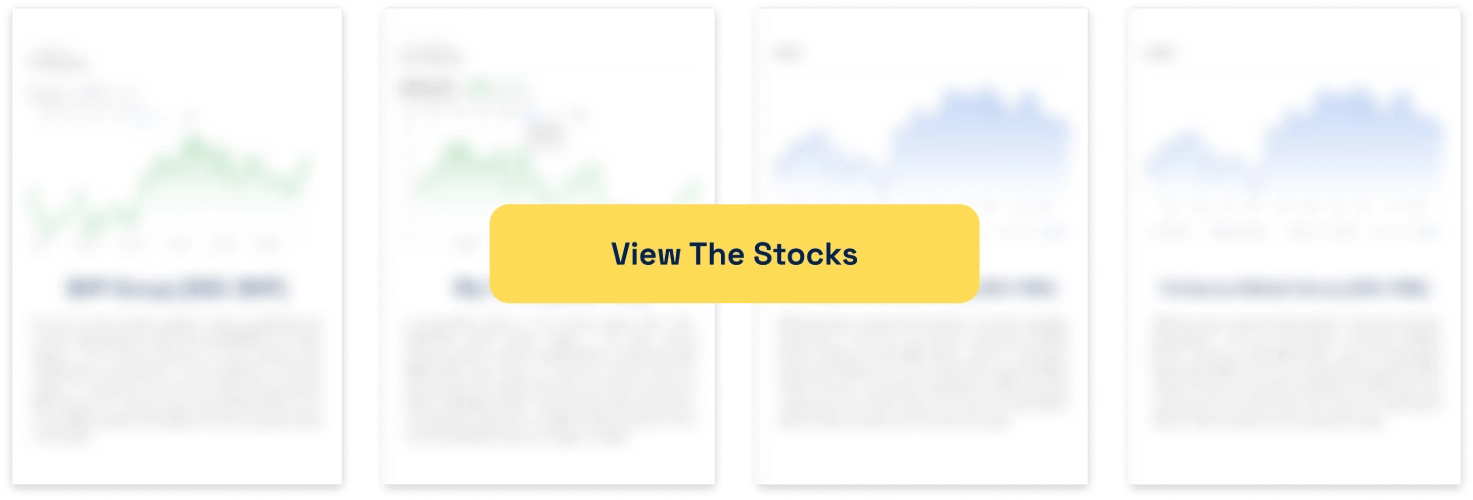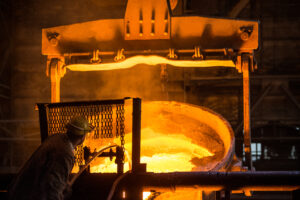Will the RBA Cut Rates in May? Here’s Why Markets Think It’s a Sure Bet
![]() Ujjwal Maheshwari, April 10, 2025
Ujjwal Maheshwari, April 10, 2025
As May approaches, investor focus sharpens on the Reserve Bank of Australia (RBA) and the potential for a rate cut at its meeting which is scheduled for Tuesday the 20th of that month.
As early as a few weeks ago, it was thought investors may have to wait until the second half of the year to see any cuts at all. Market sentiment has shifted noticeably over recent days, with a growing consensus among institutional investors and analysts that a rate cut is increasingly likely. And all because of Trump’s tariffs.
Will the RBA cut rates in May? In this article, we examine the macroeconomic signals driving these expectations, assess the likelihood of a monetary policy shift, and explore the investment implications if the RBA moves to ease in May.
What Are Interest Rate Cuts, and Why Do They Matter?
Before we explore the specifics, let’s clarify what interest rate cuts mean and why they matter for Australians. The RBA sets the cash rate, which is the interest rate on overnight loans between banks. This rate impacts the cost of borrowing for businesses and consumers.
When the RBA cuts rates, borrowing becomes cheaper, encouraging spending and investment, while higher rates do the opposite, slowing economic activity.
Rate cuts are typically used as a tool to stimulate economic growth, especially when inflation is low, unemployment is rising, or economic growth has slowed. They can also help boost consumer confidence by lowering monthly repayments on loans, such as mortgages.
Markets Think the RBA Will Cut Rates in May
Financial markets are pricing in more than a 100% chance of a cut in May and at least another 3 more in the 2nd half of 2025. This could see rates fall below 3% dependant on the size of those rate cuts. All four of the big banks’ economists expect at least three rate cuts this year and all expect the cuts to start in May and potentially come in the three consecutive meetings (with the meetings after May scheduled for July and August).
Other noteable economists concur. Betashares’ David Bassanese told the ABC that a rate cut was ‘all but certain…unless it’s an incredibly nasty CPI’. He’s talking about the upcoming inflation figures and stating only bad inflation figures (i.e. inflation surging significantly outside the RBA’s target range) could prevent a rate cut.
But Why?
The growing speculation about an RBA rate cut in May is not without merit. Several key economic indicators have raised eyebrows, leading market participants to believe that a cut could be imminent. Here are some of the main factors influencing these predictions:
Slowing Economic Growth
Australia’s economy has shown signs of slowing down in recent quarters. GDP growth has been lower than expected, and consumer confidence has been fragile.
The Australian Bureau of Statistics (ABS) recently reported that the economy grew by 0.6% in the final quarter of 2024, just below analysts’ expectations. This slowdown is partly attributed to the global economic climate, ongoing trade tensions, and domestic challenges.
While the Australian economy is still growing, the slowdown has been enough to prompt concern that a rate cut could provide the necessary stimulus to maintain growth momentum.
Falling Inflation
One of the primary reasons for speculation around a rate cut is the trajectory of inflation. Inflation in Australia has cooled significantly since its peak in 2022. The Consumer Price Index (CPI) has dropped from a high of 7.8% to around 2.4% by the end of 2024. This decline has led many to believe that the RBA has done its job in controlling inflation and that it might now ease rates to support economic recovery without reigniting inflationary pressures.
The RBA’s goal has been to bring inflation within the target range of 2-3%, and the latest data suggests this is well within reach. This gives the RBA room to be more flexible with its monetary policy, potentially opting for a rate cut in May.
Unemployment Rate Concerns
Another key factor influencing expectations is the unemployment rate, which, while still low, has shown signs of edging up. In February 2025, the unemployment rate stood at 4.1%, slightly higher than its historic lows in the previous year.
While the labour market remains relatively tight, the rise in unemployment could signal that the economy is cooling down and that businesses are becoming more cautious about hiring. The RBA may see this as a sign that additional economic stimulus is necessary, and a rate cut could help provide that boost to the labour market.
Global Economic Conditions (Trump Tariffs)
Global economic factors play a significant role in shaping domestic monetary policy. And right now, it is all about Donald Trump’s tariffs. Now it is true that Australia appears to have gotten off lightly with mere 10% tariffs. But there’s no certainty that this’ll be the end of it…there is speculation that more tariffs (or other trade-restrictive measures) could come on certain sectors, particularly pharmaceuticals.
Moreover, the impact on other countries could also flow through to Australia. The country worst hit by Trump’s tariffs is China. China could well pivot to Australian goods, given that relations are better than they were under the Morrison government. But the economy could still slow down there.
Investment Implications of a Rate Cut
Equities
Lower rates generally support equity valuations through reduced discount rates and improved corporate borrowing conditions. Sectors such as housing, consumer discretionary, and tech tend to outperform in rate-cut environments. However, defensive sectors may underperform if risk appetite rises.
Fixed Income
Investors should monitor the front end of the yield curve, which is most sensitive to cash rate changes. A rate cut could lead to a bond rally, especially in government and high-grade corporates. Floating rate notes may underperform as benchmark rates fall.
Property and REITs
Lower interest rates could stimulate residential construction and commercial property investment. Real estate investment trusts (REITs) may see renewed investor interest as their yields become more attractive relative to fixed income.
Currency Markets
The AUD may face depreciation pressure if the RBA cuts rates while other central banks remain on hold. This could support exporters and companies with foreign revenue exposure but increase input costs for import-reliant sectors.
How Would an RBA Rate Cut Impact the Australian Economy?
If the RBA does indeed cut rates in May, the effects could be felt across various sectors of the economy. Here’s what Australians could expect:
Lower Mortgage Repayments
The most immediate effect of a rate cut would be on mortgages. As the cash rate falls, so too would interest rates on loans as banks pass them on to their customers. This would lead to lower repayments for homeowners with variable-rate mortgages, providing relief for households feeling the pinch of rising living costs.
For many Australians, a rate cut could make home ownership more affordable, especially for first-time buyers who have struggled with high prices in recent years.
Boost to Consumer Spending
A rate cut could also encourage more consumer spending. With borrowing becoming cheaper, consumers might be more inclined to take out loans for big-ticket items like cars, appliances, or renovations. This increase in consumer spending could help stimulate the economy, boosting retail sales and benefiting businesses. However, any increases to certain goods due to Trump’s tariffs could mitigate the impact of rate cuts.
Stronger Investment in Housing and Business
Lower interest rates tend to encourage both residential and commercial property investment. Builders and developers may find it easier to access cheaper financing for new projects, while business owners could be more willing to expand their operations, invest in new technologies, or hire additional staff.
Potential Risks: Is a Rate Cut Too Early?
While the markets are betting on a rate cut, there are potential risks to consider. The economy may not yet be in a position where a rate cut would be entirely appropriate. If inflation unexpectedly rises again or if global economic conditions worsen, the RBA may have to reverse course and increase rates again. This could destabilise the economy and create uncertainty in the financial markets.
We think the RBA is super cautious about its image which would be damaged by a sudden reversal of course. Remember in 2020 when ex-governor Phillip Lowe promised no rate hikes until 2024? People remember that. It’d be one thing if he promised no rate hikes ‘for the foreseeable future’, but having given a specific year, people would always hold him accountable for breaking that promise.
Conclusion
While no one can predict the future with certainty, it seems that a rate cut from the RBA in May is increasingly likely and some think it is all but certain. Weakened economic and investor sentiment due to the Trump tariffs, falling inflation, and a softening labour market are all pointing to the fact that the RBA may need to take action to support the economy.
For many Australians, this could mean lower mortgage repayments, more affordable borrowing, and a potential boost to the economy. However, it’s important to stay vigilant, as the RBA will continue to monitor economic data closely, and any surprises in the global or domestic economy could change its course.
As always, we believe that the key to navigating these changes lies in staying informed and understanding the broader economic picture.
What are the Best ASX Stocks to invest in right now?
Check our buy/sell tips.
FAQ
- Why do markets think the RBA will cut rates in May?
Markets are betting on a rate cut due to factors like slowing economic growth, falling inflation, rising unemployment, and global economic uncertainties. The RBA’s recent statements also hint at a more dovish approach, further strengthening this view.
- How will a rate cut impact my mortgage repayments?
If the RBA cuts rates, your variable-rate mortgage repayments are likely to decrease, as lenders usually pass on the reduction to borrowers. This could ease financial pressure for homeowners.
- Will a rate cut lead to more job opportunities?
While a rate cut could stimulate business investment and economic activity, the labour market’s future depends on various factors. It could help support hiring in sectors that rely on credit and investment, but job growth is not guaranteed.
- What happens if the RBA decides not to cut rates?
If the RBA doesn’t cut rates, the economy might continue to slow, and inflation may remain under control. However, the RBA would likely continue monitoring economic conditions closely to decide if further action is needed.
- Can the RBA raise rates if inflation returns?
Yes, the RBA could increase rates again if inflation rises unexpectedly. This would be a balancing act to ensure inflation remains within the target range of 2-3%.
Blog Categories
Get Our Top 5 ASX Stocks for FY26
Recent Posts
Telix Pharmaceuticals (ASX: TLX) Stages a Comeback as FY25 Update Signals Renewed Momentum
Telix Pharmaceuticals (ASX: TLX) has been one of Australia’s most talked-about biotech stories … a company that once soared on…
6 ASX companies experiencing a better FY26 following a poor FY25
There are already some ASX companies experiencing a better FY26 than FY25. It may only be 3 and a half…



